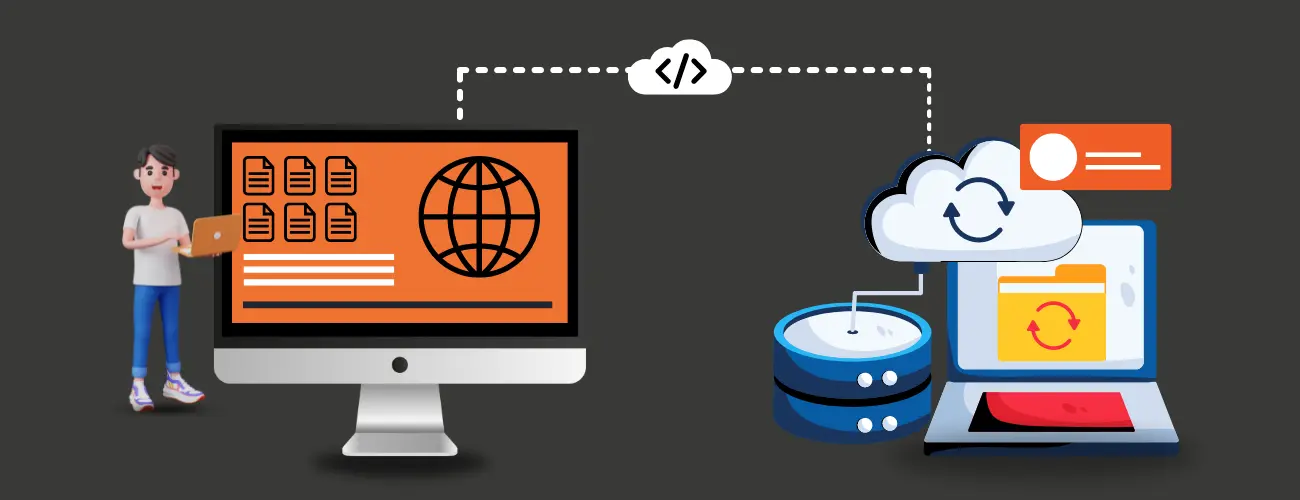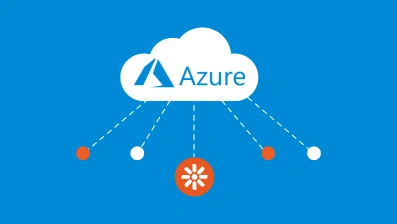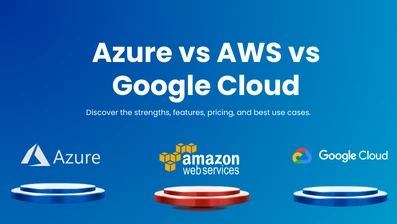Are you thinking about making the big move from on-premise to cloud migration?
Well, you're not alone!
More and more businesses are leaving behind their traditional infrastructure and embracing the cloud.
Why?
Because it's simply the future of business operations—scalable, flexible, and way more cost-effective.
But let's be honest, cloud migration isn't just about flipping a switch.
It’s a process that needs careful planning and strategy. If you rush it, you risk downtime, data loss, or worse—jeopardizing security.
That’s why this cloud migration guide is here to walk you through everything step by step.
Whether you're just exploring options or ready to dive into the migration process, this guide is designed to help you understand the ins and outs of moving from on-premise infrastructure to a cloud-based platform.
We'll break it all down for you, so by the end, you'll know exactly how to migrate, avoid common pitfalls, and make the most out of the cloud.
So, are you ready to take your business to the next level?
Let’s get started with the ultimate step-by-step guide to on-premise to cloud migration.
Understanding On-Premise and Cloud Platforms
Let’s start by understanding what we’re working with here.
If you’ve been managing an on-premise infrastructure, you already know it involves a lot of hardware, maintenance, and costs.
Your servers, storage, and software are all housed in your own facilities, and while that can offer control, it often lacks flexibility.
Not to mention, it can get pretty expensive to scale as your business grows.
Now, let’s talk about the cloud. Instead of relying on physical servers, everything runs on the internet—or, as we say, “in the cloud.”
This means your data, apps, and systems are hosted on servers managed by cloud providers like AWS, Azure, or Google Cloud.
One of the best things about cloud platforms is their flexibility.
Need more storage? Done.
Want better processing power? Easy.
And all of that without having to purchase new hardware.
The biggest difference? Cloud platforms allow you to scale up or down based on your needs, and you only pay for what you use.
Compare that to the fixed costs of an on-premise setup, and the cloud starts to look like a pretty smart choice.
In a nutshell, the on-premise vs cloud debate often boils down to one simple question: Do you want to invest in maintaining your infrastructure or let someone else handle it while you focus on growing your business?
Why Migrate from On-Premise to Cloud?
So, why should you even consider on-premise to cloud migration?
Well, here are three solid reasons why moving to the cloud might just be the best decision you make for your business.
1. Cost Savings – Pay for What You Use
One of the biggest draws of the cloud is the cost savings.
With on-premise infrastructure, you’re stuck with high upfront costs—servers, storage, networking hardware—not to mention the ongoing maintenance.
The cloud, on the other hand, operates on a pay-as-you-go model.
You only pay for the resources you actually use. Need more storage? Pay for it. Need less? Scale down.
This cloud migration strategy lets you manage your IT budget much more efficiently.
2. Flexibility and Scalability – Grow Without Limits
Unlike traditional on-premise infrastructure, the cloud allows you to scale up (or down) as needed.
Whether you're experiencing a sudden surge in users or launching a new product, the cloud adapts to your needs in real time.
No more buying extra servers in advance "just in case."
The cloud migration process lets you add or remove resources with just a few clicks, keeping your operations smooth and agile.
3. Better Security and Disaster Recovery
Security is always a concern, right?
With on-premise setups, you’re responsible for maintaining firewalls, backups, and disaster recovery systems.
But with cloud platforms, you can tap into enterprise-level security features that are constantly updated by your provider.
Not only that, but cloud migration also comes with built-in disaster recovery solutions, meaning your data is always backed up and ready to be restored in case something goes wrong.
In short, the cloud offers more than just convenience—it gives you a cost-effective, scalable, and secure solution to future-proof your business.
Pre-Migration Considerations
Before you dive headfirst into the cloud migration process, there are a few important things to think about.
Planning ahead can make all the difference in avoiding headaches later on. Here’s what you need to consider:
1. Assess Your Current Infrastructure
First things first—what are you currently working with?
Do a thorough inventory of your existing infrastructure, applications, and data. Not everything needs to make the move.
Some legacy systems might be better off staying on-premise, while others will thrive in the cloud.
The key here is to understand what’s worth migrating and what’s not.
2. Identify What Stays and What Goes
Do you want a full migration, or are you thinking about a hybrid cloud approach, where some systems stay on-premise and others move to the cloud?
A hybrid cloud migration lets you keep sensitive data in-house while taking advantage of the cloud’s flexibility for less critical operations.
It’s a strategic decision that can give you the best of both worlds.
3. Security and Compliance Concerns
If your industry deals with sensitive information, security and compliance need to be at the top of your list.
Ensure that the cloud platform you’re migrating to meets all your regulatory requirements—whether it’s HIPAA for healthcare, GDPR for Europe, or something else.
The right cloud migration strategy will help you stay compliant without sacrificing security.
4. Evaluating Cloud Providers
Not all cloud providers are created equal.
AWS, Google Cloud, Azure development—they each have their strengths.
When evaluating providers, think about pricing models, the range of services offered, customer support, and how their security measures stack up.
You want a partner who fits your business goals, both now and as you grow.
Taking the time to plan these things out before you begin will set you up for a smooth transition to the cloud.
Remember, on-premise to cloud migration is a big step, so planning ahead is key to making sure everything goes off without a hitch.
Step-by-Step Guide to On-Premise to Cloud Migration
Now that you've got your prep work done, let’s get into the actual cloud migration process.
Moving from on-premise to cloud is a series of well-planned steps.
Let’s break it down so you can follow along smoothly.
Step 1: Define Your Cloud Strategy
Every successful migration starts with a strategy.
What’s your reason for moving to the cloud? Is it to cut costs, improve scalability, or enhance disaster recovery?
Your business goals will guide how you approach the migration and which cloud services to prioritize.
A clear cloud migration strategy will help you stay on course and avoid scope creep.
Step 2: Assess Existing Infrastructure
Next, take a deep dive into your current setup.
What apps and data do you have? Which ones are business-critical, and which can be left behind or archived?
Not everything will need to go to the cloud.
The more clarity you have at this stage, the smoother your migration will be.
Step 3: Choose the Right Cloud Service Model
There’s no one-size-fits-all in the cloud.
You’ll need to pick between IaaS (Infrastructure as a Service), PaaS (Platform as a Service), or SaaS (Software as a Service) based on your needs.
For example, if you want control over your infrastructure, IaaS is a great fit.
For businesses focusing on development without worrying about the backend, PaaS is the way to go.
Step 4: Select a Cloud Provider
AWS, Azure, Google Cloud—it’s decision time.
When selecting your cloud provider, consider not only their pricing but also their service offerings, integration capabilities, and customer support.
Choose a provider that aligns with your long-term goals and can scale with you.
Step 5: Develop a Migration Plan
Now it’s time to get tactical.
Create a detailed timeline that includes milestones, tasks, and responsibilities.
Who will handle data migration? Who will test the systems?
A clear migration plan prevents surprises and ensures everyone’s on the same page.
Step 6: Execute Data Migration
This is where the magic happens.
Move your data to the cloud using migration tools from your cloud provider, like AWS Data Migration Service or Azure Migrate.
Be prepared for some downtime, but with the right planning, you can keep it minimal. Make sure everything is secure, encrypted, and backed up.
Step 7: Test and Validate Migration
After the migration, it’s time to test.
Ensure all your applications and systems are working as expected in the cloud.
Run performance tests, check for data integrity, and make sure there are no glitches. This is your chance to catch any issues before going live.
Step 8: Post-Migration Optimization
Once you’re in the cloud, it’s not time to sit back just yet.
You’ll want to optimize your cloud environment to ensure you’re not overspending or underutilizing resources.
Regular monitoring of performance, security, and cost is essential.
Use your provider’s built-in tools to get insights and make improvements over time.
That’s the full roadmap for a smooth on-premise to cloud migration. Take it one step at a time, and you’ll find the transition isn’t as daunting as it seems.
Common Challenges in On-Premise to Cloud Migration
Let’s face it—no migration is without its challenges.
Moving from on-premise to the cloud can sometimes feel like navigating a minefield.
But don’t worry!
We’ve got you covered with the most common challenges and, more importantly, how to overcome them.
1. Legacy System Compatibility Issues
One of the biggest headaches you’ll encounter is getting older, legacy systems to play nice with modern cloud platforms.
Some of your existing systems might not be designed to work in the cloud, which can make the migration process tricky.
How to Overcome It:
Consider a phased approach where you first migrate systems that are cloud-ready and leave more complex legacy applications for later. In some cases, you might need to modernize or replace those legacy apps altogether. Using a hybrid cloud strategy during the transition period can also help ease the pressure.
2. Data Security and Compliance Risks
Data security is always a major concern when it comes to cloud migration.
Moving sensitive data from your on-premise infrastructure to the cloud can feel risky, especially if you're dealing with highly regulated industries like finance or healthcare.
There’s always the fear of data breaches or compliance issues.
How to Overcome It:
Choose a cloud provider with robust security certifications (like SOC 2, ISO 27001) and ensure they meet your industry’s regulatory standards (HIPAA, GDPR, etc.). Utilize encryption, both in transit and at rest, and set up multi-factor authentication (MFA) to bolster security. Make security audits a part of your post-migration routine.
3. Downtime During Migration
Nobody likes downtime, especially if it affects your operations or customer experience.
During the migration process, there’s always a risk of systems being unavailable, even if it's temporary.
How to Overcome It:
Plan, plan, plan! Use a gradual migration approach where you move services in stages rather than all at once. This helps minimize downtime and ensures that your most critical systems remain online. Tools like AWS CloudEndure can help with near-zero downtime migrations.
4. Unexpected Costs
Cloud platforms offer pay-as-you-go pricing, but if you’re not careful, those costs can quickly spiral out of control.
This happens when businesses don't fully understand their usage or fail to optimize their cloud environment post-migration.
How to Overcome It:
Monitor your usage closely using tools like Azure Cost Management or AWS Cost Explorer. Set budgets and alerts to keep track of your spending. Regularly audit your cloud environment to eliminate unused resources and optimize configurations for better cost management.
By anticipating these challenges and planning for them, your cloud migration process will go a lot smoother. And when these obstacles pop up (because they will!), you’ll be ready to handle them like a pro.
Benefits of Cloud Migration for Your Business
You’ve heard about the challenges, but now let’s dive into the good stuff—the benefits!
Moving from on-premise to cloud comes with some serious perks.
Here’s how cloud migration can supercharge your business.
1. Improved Business Agility
In today’s fast-paced world, agility is everything.
The ability to adapt quickly to changes in the market, scale your operations, or deploy new services can make all the difference.
With a cloud-based infrastructure, you get the flexibility to launch new products, add services, or scale up your computing power almost instantly.
No more waiting weeks or months to install new hardware or expand server capacity!
2. Cost-Effectiveness Over Time
Yes, there are upfront costs when migrating to the cloud, but once you’re there, you’ll start to see savings in the long run.
With on-premise infrastructure, you’re paying for hardware, maintenance, and upgrades—all of which can eat up your budget.
In contrast, cloud platforms operate on a pay-as-you-go model, which means you only pay for what you use.
Over time, this can lead to significant cost reductions, especially as you optimize your usage.
3. Enhanced Security Features
It might seem counterintuitive, but moving to the cloud can actually improve your security posture.
Cloud providers like AWS, Azure, and Google Cloud offer top-of-the-line security features—things like encryption, advanced firewalls, and automated patching.
This is how azure or AWS development solution can be super useful.
Plus, their infrastructure is regularly audited for security certifications, which means you’re operating on a platform that meets some of the highest security standards available.
4. Increased Innovation Capabilities
When you’re not bogged down with managing physical servers and hardware, you have more time and resources to focus on what really matters—innovation.
The cloud allows you to experiment with new technologies like AI, machine learning, and big data analytics without having to invest in expensive infrastructure.
This opens up a world of possibilities for creating new products, enhancing services, or improving customer experiences.
In short, the cloud migration process can help your business be more agile, save money, and innovate faster—all while keeping your data secure.
Post-Migration Best Practices
Congratulations!
You’ve completed your on-premise to cloud migration. But the journey doesn’t stop there.
To make the most of your cloud-based infrastructure, there are a few best practices you’ll want to keep in mind post-migration.
Let’s dive into what you should focus on next.
1. Regular Cloud Performance Monitoring
Once you’re in the cloud, it’s important to keep a close eye on your system's performance.
Use the monitoring tools provided by your cloud platform (such as AWS CloudWatch or Azure Monitor) to track key metrics like uptime, response times, and system load.
Regular monitoring helps you spot issues before they become big problems and ensures everything is running smoothly.
2. Security Audits and Compliance Checks
Security doesn’t end with the migration—it’s an ongoing process.
Regular security audits will ensure that your data remains protected in the cloud. This includes checking your firewalls, access controls, encryption protocols, and more.
If you’re in a regulated industry, like healthcare or finance, make sure your cloud infrastructure continues to meet compliance standards such as HIPAA or GDPR.
3. Disaster Recovery and Backup Plans
One of the key benefits of cloud migration is the built-in disaster recovery capabilities.
But just because it’s there doesn’t mean you can set it and forget it.
Regularly test your disaster recovery protocols to make sure they’ll work when needed.
Make sure you’re also backing up critical data at regular intervals—cloud platforms like AWS and Azure offer automated backup services to keep things simple.
4. Continuous Cost Optimization
After migrating, it’s easy to forget about costs, but that can lead to overspending.
Keep an eye on your cloud usage with tools like AWS Cost Explorer or Azure Cost Management.
Look for opportunities to downsize unused resources or switch to more cost-efficient services.
Setting up automated alerts when spending hits certain thresholds is a great way to prevent surprise bills.
5. Leverage New Cloud Features
Cloud providers are constantly rolling out new features, and some of them could be perfect for your business.
Stay on top of updates from your cloud platform and experiment with new tools, whether it's AI capabilities, advanced data analytics, or improved automation.
By taking advantage of these innovations, you’ll stay ahead of the competition and keep your systems running efficiently.
Incorporating these cloud best practices into your post-migration strategy ensures that your business not only thrives in the cloud but also stays optimized, secure, and cost-effective.
How DotStark Can Help with Your Cloud Migration
At this point, you’re probably realizing that migrating from on-premise to cloud is no small task.
It takes careful planning, execution, and post-migration optimization to really get the benefits.
That’s where we come in.
Here at Dotstark as a leading cloud app development company, we specialize in helping businesses just like yours navigate the cloud migration process.
From assessing your current infrastructure to selecting the best cloud platform and executing a smooth migration, we handle everything.
Our team of experts will ensure that your move to the cloud is secure, efficient, and tailored to meet your business goals.
But we don’t stop at the migration itself.
We offer ongoing support to help you optimize your cloud usage, manage costs, and take advantage of new features and innovations as they become available.
Think of us as your long-term partner in making the most out of your cloud-based infrastructure.
Ready to take the first step? Reach out to us today, and let’s discuss how we can make your on-premise to cloud migration a success.
Conclusion
Migrating from on-premise to the cloud is no longer just an option—it’s becoming a necessity for businesses that want to stay competitive. The cloud offers scalability, cost-efficiency, and the flexibility to grow as your business evolves. By following this cloud migration guide, you can make the transition smoothly, avoid common challenges, and set yourself up for long-term success.
Remember, the cloud isn’t just about reducing costs or moving data—it’s about future-proofing your business, increasing agility, and opening up new opportunities for innovation. Whether you're just getting started or are well on your way, taking the right steps during the cloud migration process will ensure your business is ready for whatever comes next.
Frequently Asked Questions
The timeline can vary depending on the size and complexity of your systems. For smaller businesses, it can take a few weeks. Larger enterprises might need several months to complete a full cloud migration.
Some of the most common challenges include legacy system compatibility, security concerns, and unexpected costs. However, careful planning and choosing the right cloud migration strategy can mitigate these risks.
Using encryption, both in transit and at rest, is key. Additionally, working with a trusted cloud provider who offers strong security protocols, like multi-factor authentication and data encryption, is essential.
Yes! Many businesses opt for a hybrid cloud model, where some systems remain on-premise while others move to the cloud. This can be a great option if you're not ready for a full migration.
The cost depends on several factors, including the size of your infrastructure, the complexity of the migration, and the cloud provider you choose. It’s important to factor in not only the upfront costs but also ongoing expenses for optimization and support.

-(1).webp)









 +91 9680599916
+91 9680599916
 vanshika@dotstark.com
vanshika@dotstark.com
